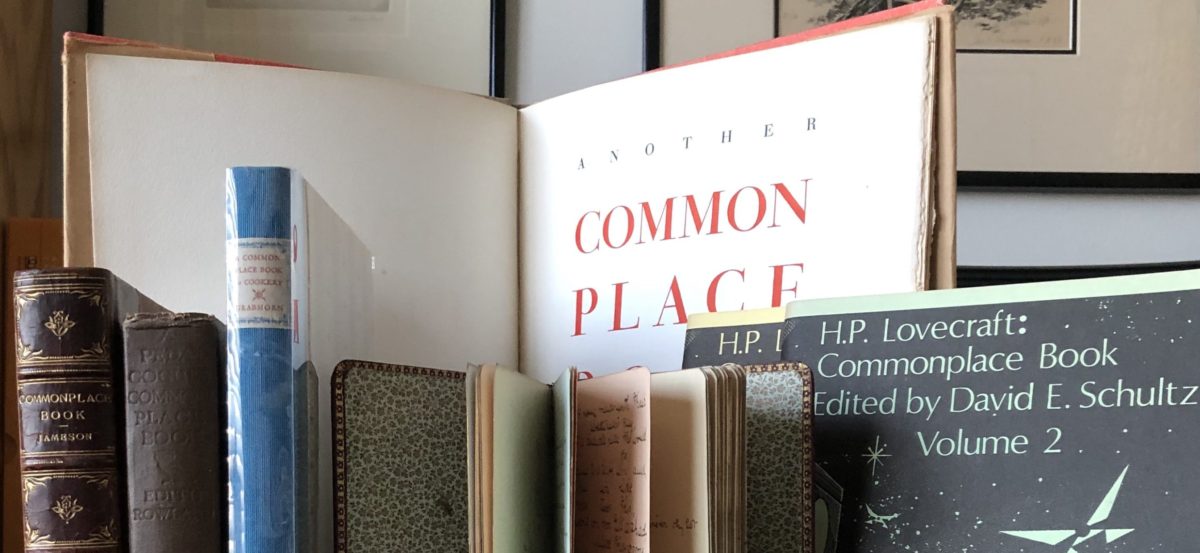
The Commonplace Book Project began in 2015 when I asked my students to keep a commonplace book in my Intellectual Heritage Classes at Temple University. I partnered with Special Collections in Temple Library, which provided students the opportunity to look closely at some of its commonplace books and related titles in its general and rare book collections. Some of the student work was featured in a Temple Library exhibit called The Art of the Commonplace Book: An Exhibition of Student Work.
Each semester I continue to work with Special Collections, and I cannot stress how valuable that has been. Early in the semester we have an orientation, which gives students some ideas on how to access the libraries databases and its general collection to help them find materials they can use in their commonplace books. I try to encourage students to “read outside the classroom,” beyond just their homework and assigned texts. Getting to see actual commonplace books, some dating back to the nineteenth and early twentieth centuries, as well as past student works, has always been a good place to start.
I began developing the assignment further during the next several years, finding new and different ways in which to incorporate the commonplace book idea into my syllabus. As I began developing the website, I refined the assignment further (see below) and incorporated some ideas of other educators who were also using commonplace books in their classrooms.
The assignment has been successful and rewarding for the most part, but sometimes frustrating and disappointing. Students often wait until the last weeks of the semester to write their commonplace books, and others simply fail to follow simple directions, such as using proper provenance (or citation). Several students scour quotation cites on the internet to find whatever will fulfill the requirements. The majority of students, however, take great pride in what they have accomplished, including several students who filled their books with interesting and serious entries, along with artwork and graphic design. A couple of students made their own books with creative or original cover and interior art.









